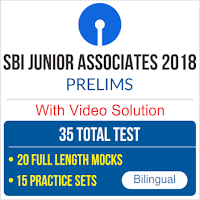Directions (1-5): Study the following information carefully and answer the given questions:
Twelve persons are sitting in two parallel rows containing six persons each in such a way that there is an equal distance between adjacent persons. In the Row-1 A, B, C, D, E and F are sitting and all of them are facing towards north direction . In the Row-2 P, Q, R, S , T and U are sitting and all of them are facing towards south direction . In the given seating arrangement each member sitting in a row faces another member of the other row.
More than three persons sit between R and P. Immediate neighbour of R faces D. Two persons sit between D and F. Immediate neighbour of F faces T. Immediate neighbour of C faces U. C is not immediate neighbour of F. The one who faces A sits third to left of Q. Immediate neighbour of Q faces E. B does not sit any of the extreme end.
Q1. Who among the following faces E?
(a) P
(b) Q
(c) S
(d) R
(e) T
Q2. Who among the following sits second to right of U?
(a) P
(b) Q
(c) No one.
(d) R
(e) T
Q3. Who among the following sits third to right of D?
(a) F
(b) C
(c) No one.
(d) B
(e) A
Q4. How many persons sits between R and the one who faces F?
(a) One
(b) Two
(c) Three
(d) No one.
(e) Four
Q5. Four of the following five are alike in a certain way based on the given seating arrangement and hence form a group. Which is the one that does not belong to that group?
(a) F
(b) P
(c) C
(d) A
(e) R
Directions (6-10): Study the information and answer the following questions:
In a certain code language
‘green bottle pure water’ is written as ‘ el or mb cn’,
‘white wire red mouse’ is written as ‘ tz vc xa yc ’,
‘pure and milk white’ is written as ‘ lv cn ob tz ’,
‘and pure water mouse’ is written as ‘ ob xa el cn ’,
Q6. What is the code for ‘red’ in the given code language?
(a) tz
(b) vc
(c) xa
(d) Cannot be determined
(e) yc
Q7. What is the code for ‘water’ in the given code language?
(a) el
(b) mb
(c) or
(d) cn
(e) None of these
Q8. What is the code for ‘and’ in the given code language?
(a) lv
(b) cn
(c) tz
(d) ob
(e) None of these
Q9.What is the possible code for ‘fire wire’ in the given code language?
(a) yu yc
(b) yc cn
(c) vc yc
(d) yc lv
(e) vc cn
Q10. What is the code for ‘mouse’ in the given code language?
(a) ob
(b) xa
(c) el
(d) cn
(e) None of these
Directions (11-15): In these questions, relationship between different elements is shown in the statements. These statements are followed by two conclusions.
Give answer
(a) If only conclusion I follows.
(b) If only conclusion II follows.
(c) If either conclusion I or II follows.
(d) If neither conclusion I nor II follows.
(e) If both conclusion I and II follow.
Q11. Statement: N ≥ J = M, S > B > R < O = M
Conclusions:
I. N = M
II. N > M
Q12. Statement: W ≤ Y > Z = X > P > J
Conclusions:
I. Y > P
II. Z < W
Q13. Statement: A < B < C ≤ D = E
Conclusions:
I. B ≤ E
II. B < E
Q14. Statement: A ≥ B ≤ C, C < D, D > F
Conclusions:
I. F > B
II. A > D
Q15. Statement: X > Y ≥ Z, Q = Y, P > X
Conclusions:
I. Z < P
II. P > Q





 GA Capsule for SBI Clerk Mains 2025, Dow...
GA Capsule for SBI Clerk Mains 2025, Dow...
 The Hindu Review October 2022: Download ...
The Hindu Review October 2022: Download ...
 IBPS SO Final Result 2025 Out, Check Fin...
IBPS SO Final Result 2025 Out, Check Fin...







